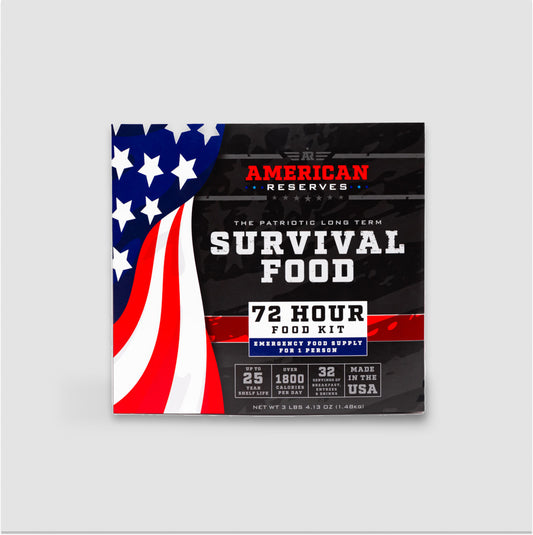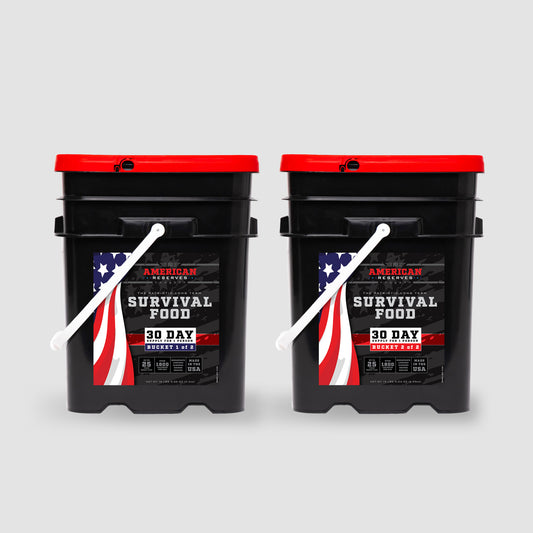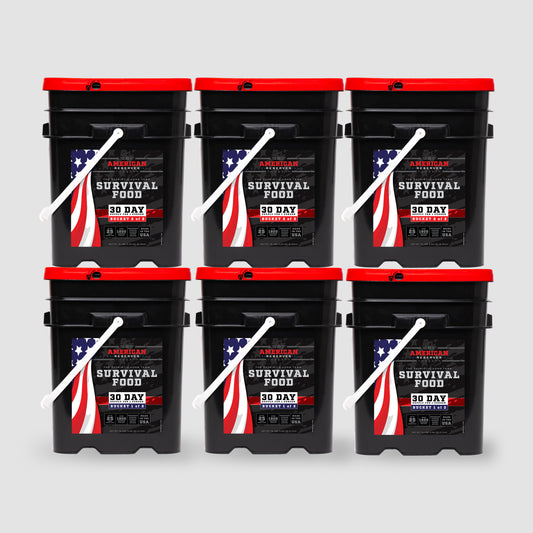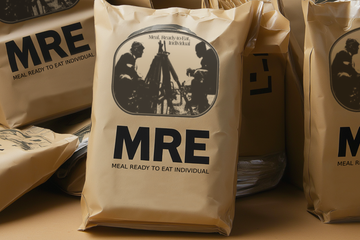
What Is An MRE: All About MREs
For those who revel in the great outdoors, where adventure beckons beyond the beaten path, Meals Ready-to-Eat (MREs) offer an unparalleled blend of convenience and nourishment. Whether you're embarking on a multi-day hike, a camping expedition, or a spontaneous road trip, MREs provide a lightweight, compact solution that eliminates the need for cumbersome cooking gear. Designed for ease of use and portability, these meals ensure that your focus remains on the journey ahead, not on meal preparation. Join us as we explore the versatility of MREs and how they can enhance your outdoor experiences with simplicity and efficiency.
What Is An MRE?
A Meal Ready-to-Eat (MRE) is a self-contained, individual field ration in lightweight packaging, originally developed for the military to provide soldiers with a convenient and nutritious meal option in challenging environments. Each MRE is designed to be a complete meal, offering a balance of proteins, carbohydrates, and fats, along with essential vitamins and minerals to sustain energy and health. They typically include an entrée, side dish, dessert, crackers or bread, and a beverage mix, along with utensils and a flameless ration heater for warming the food. MREs are renowned for their long shelf life, often lasting several years, making them an ideal choice not only for military use but also for emergency preparedness, outdoor adventures, and as a convenient meal solution for civilians.
What Are the Benefits of MREs?
-
Long Shelf Life: MREs are designed to last for several years without refrigeration, making them an excellent choice for long-term storage in emergency preparedness kits and stockpiles.
-
Nutritionally Balanced: Each MRE provides a complete meal with a balanced mix of proteins, carbohydrates, fats, and essential nutrients, ensuring that you receive the necessary sustenance in any situation.
-
Portability and Convenience: With their compact, lightweight packaging, MREs are easy to transport and require no additional cooking equipment, making them ideal for outdoor activities like hiking, camping, and road trips.
-
Ease of Use: MREs come with a flameless ration heater, allowing you to warm your meal without the need for an open flame or electricity, providing a hot meal in minutes regardless of your location.
-
Versatility: Originally developed for military use, MREs have transitioned to civilian applications, offering a practical solution for emergency planners, outdoor enthusiasts, and anyone seeking a reliable backup meal option.
How Do MREs Work?
Composition and Packaging
MREs are meticulously designed to provide a complete meal in a compact, durable package. Each MRE typically includes an entrée, side dish, dessert, crackers or bread, a spread such as peanut butter or cheese, a beverage mix, and an accessory pack containing utensils, napkins, and condiments. The packaging is robust and airtight, ensuring the contents remain fresh and protected from external elements. This design not only preserves the food's quality over time but also makes MREs easy to transport and store, whether in a backpack or an emergency kit.
Heating Mechanism
One of the standout features of MREs is the flameless ration heater, which allows users to enjoy a hot meal without the need for an open flame or electricity. The heater is activated by a small amount of water, which reacts with a magnesium-based heating element to produce heat. This chemical reaction generates enough warmth to heat the meal pouch in a matter of minutes. The simplicity and effectiveness of this heating method make MREs particularly valuable in situations where traditional cooking is impractical or impossible.
Nutritional Balance
MREs are crafted to provide a balanced nutritional profile, ensuring that each meal delivers the necessary energy and nutrients to sustain an individual in demanding conditions. They contain a well-rounded mix of proteins, carbohydrates, and fats, along with essential vitamins and minerals. This balance is crucial for maintaining energy levels and overall health, especially in survival scenarios or during physically demanding activities. The thoughtful composition of MREs makes them a reliable source of nourishment, whether you're in the wilderness or facing an emergency.
Shelf Life and Storage
MREs are renowned for their impressive shelf life, often lasting several years when stored properly. This longevity is achieved through advanced packaging techniques and the careful selection of packaged ingredients that are less prone to spoilage. MREs should be stored in a cool, dry place to maximize their shelf life, making them an ideal choice for long-term emergency preparedness. Their durability and extended shelf life ensure that they remain a dependable food source, ready to be utilized whenever the need arises.
Versatility and Applications
While originally developed for military use, MREs have found a wide range of applications beyond the battlefield. They are now a popular choice for outdoor enthusiasts, emergency planners, and anyone seeking a convenient meal solution. Their versatility allows them to be used in various scenarios, from camping trips and road adventures to disaster relief efforts. MREs offer a practical and efficient way to ensure food security, providing peace of mind and sustenance in diverse situations.
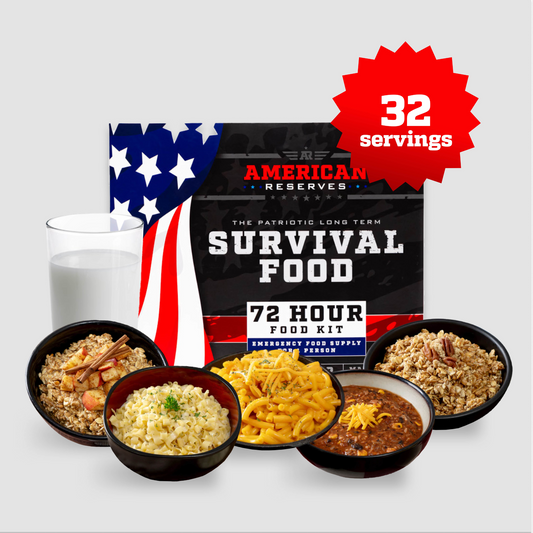
72 Hour Emergency Food and Drink Supply - 32 Servings
$36.99
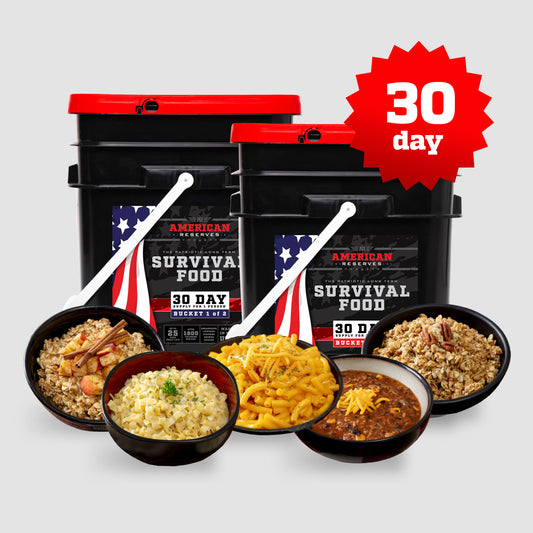
30 Day Emergency Food Supply
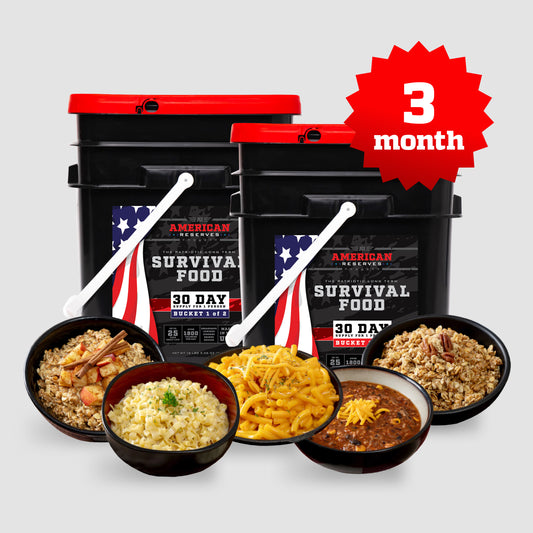
3 Month Emergency Food Supply
$835.00
Are MREs Different From Freeze-Dried?
MREs and freeze-dried meals differ primarily in their preparation, packaging, and moisture content. MREs are fully cooked, ready-to-eat meals that retain their moisture, allowing them to be consumed straight from the package without any additional preparation. They include a flameless ration heater for optional warming, making them convenient for situations where cooking is not feasible. In contrast, freeze-dried meals undergo a dehydration process that removes most of the moisture, resulting in a lightweight product that requires the addition of hot water to rehydrate before consumption. This makes freeze-dried meals particularly appealing for those prioritizing weight savings, such as backpackers. However, the need for water and a heat source can be a limitation in certain scenarios. Both options offer long shelf lives and are valuable for different contexts, with MREs providing immediate readiness and freeze-dried meals offering portability and reduced weight.
Who Uses MREs?
MREs are utilized by a diverse range of individuals and groups, each drawn to their unique benefits and practicality. Originally developed for military personnel, MREs provide soldiers with a reliable source of nutrition in the field. Beyond the military, they have gained popularity among preppers and survival enthusiasts who value their long shelf life and ease of storage for emergency preparedness. Outdoor enthusiasts, including hikers and campers, appreciate MREs for their portability and convenience, allowing them to enjoy a hearty meal without the need for cooking equipment. Additionally, emergency planners and humanitarian organizations often rely on MREs for disaster relief efforts, ensuring that affected communities have access to sustenance during crises. Even health-conscious consumers and general consumers curious about convenient meal options have embraced MREs for their balanced nutrition and versatility in various scenarios.
Are There Alternatives to MREs?
-
Freeze-Dried Meals: These meals are lightweight and have a long shelf life, making them a popular choice for backpackers and campers. They require the addition of hot water to rehydrate, offering a variety of flavors and meal options.
-
Canned Foods: Canned goods are a staple in emergency preparedness due to their durability and extended shelf life. They are readily available and can include a wide range of food types, from soups to vegetables and meats.
-
Dehydrated Foods: Similar to freeze-dried meals, dehydrated foods have had most of their moisture removed, which extends their shelf life and reduces weight. They require rehydration before consumption and are available in various forms, including fruits, vegetables, and complete meals.
-
Emergency Food Bars: These compact, calorie-dense bars are designed to provide essential nutrients and energy in a small package. They are ideal for quick consumption during emergencies and have a long shelf life, making them easy to store and transport.
-
Ready-to-Eat Canned Meals: These meals are pre-cooked and can be eaten straight from the can, offering convenience similar to MREs. They come in a variety of options, such as stews and pasta dishes, and are suitable for both emergencies and everyday use.
Conclusion
In conclusion, Meals Ready-to-Eat (MREs) stand as a testament to innovation in food technology, offering a versatile and reliable solution for a wide array of needs. Whether you're a prepper building a comprehensive emergency kit, an outdoor enthusiast seeking convenient nourishment on your adventures, or a military history buff exploring the evolution of field rations, MREs provide a unique blend of practicality, nutrition, and longevity. Their ability to deliver balanced meals without the need for refrigeration or extensive preparation makes them indispensable in both emergency scenarios and everyday life. As MREs continue to transition from military to civilian use, they embody a spirit of resilience and adaptability, ensuring that individuals and families are prepared for whatever challenges may arise. Embrace the potential of MREs and empower yourself with the confidence that comes from being ready for any situation.
Final Thoughts
Are you prepared for any emergency with a reliable food supply? Discover the advantages of American Reserves, which offers emergency food supply kits crafted from premium USA-sourced ingredients. These kits are meticulously designed to deliver the essential nutrition needed to sustain you through any crisis. Trust in American Reserves to provide the confidence and preparedness required to face any survival situation with assurance.
Sources
1. https://en.wikipedia.org/wiki/Meal,_Ready-to-Eat
2. https://www.today.com/food/trends/military-mre-review-rcna52479
3. https://www.londondaily.news/mres-explained-the-best-emergency-meal-solutions/
